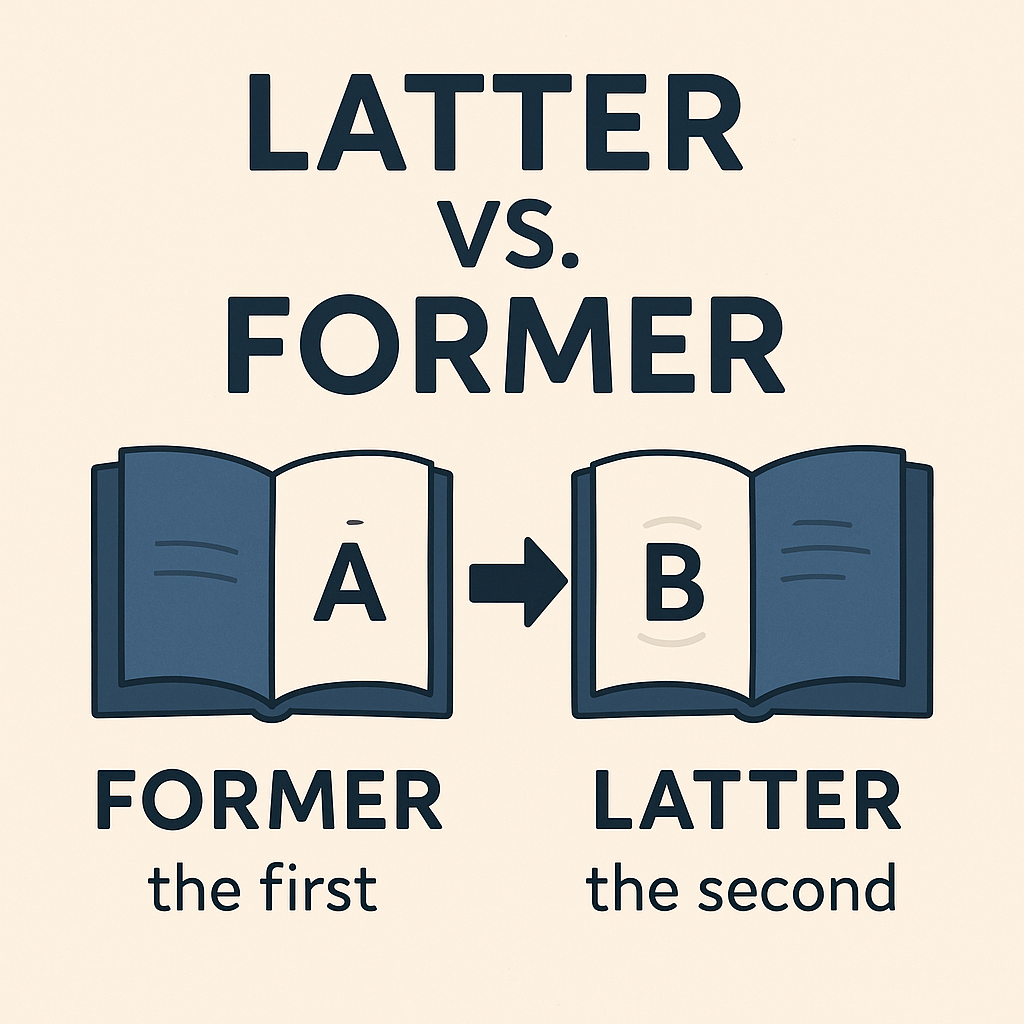Latter vs Former: Correct Usage Guide

“Latter” and “former” are like mischievous twins always switching places and leaving readers second-guessing who’s who. They show up often in articles, reports, and speeches, but mix them up and your message may flip entirely. The good news? These terms follow simple logic once you understand their roles in comparison.
In this guide, we’ll break down the difference between latter vs. former, provide clear grammar rules, and show you real-life examples to help you use both correctly. Whether you’re writing professionally or casually, mastering these words will sharpen your communication and eliminate confusion.
Related post: Lose vs Loose
Explore more: See other Grammar/Usage confusion words
Grammatical Explanation of Latter vs Former
“Former” and “latter” are adjectives used to distinguish between two previously mentioned things.
- Former refers to the first of two things.
- Latter refers to the second of two things.
✅ Examples in Sentences:
- I admire both Jane Austen and Emily Brontë, but the former is my favorite author.
- We can choose tea or coffee—the latter has less caffeine.
They are typically used in formal or structured writing to avoid repetition. Keep in mind: these terms only work when referencing two items, not more.
Subheading: “Former vs. Latter in Usage”
Both words are used as shorthand to avoid repetition in comparisons:
- “Former” = the first thing
- “Latter” = the last (second) thing
Use them carefully to maintain clarity in your writing, especially when discussing multiple items in sequence.
Real-Life Examples
Let’s make it practical:
Correct Use of “Former”:
- Between working in marketing and finance, I preferred the former.
- I’ve lived in Lagos and Abuja—the former was more fast-paced.
Correct Use of “Latter”:
- You can choose water or juice—the latter is chilled.
- She considered medicine and engineering, but chose the latter.
Incorrect Examples:
- Among apples, bananas, and grapes, the latter is my favorite.
(✘ Avoid using “latter” with more than two options.) - I prefer cakes and cookies—the former is crunchy.
(✘ “Former” doesn’t describe texture here; needs clarification.)
To avoid ambiguity, always be sure your sentence clearly lists only two items before using “former” or “latter.”
Common Mistakes
Here are mistakes people often make:
- Using with more than two items:
✘ Out of tea, coffee, and juice, the latter is best.
✔ Use specific names instead, or restructure the sentence. - Reversing the order:
✘ I like dogs and cats, but the former purrs more.
✔ Dogs were mentioned first, so that’s incorrect. - Using without prior reference:
✘ I chose the latter. (With no context, it’s confusing.)
Quick tip: Only use “former” and “latter” if two items have just been mentioned—no more, no less.
🔗 Reference: Merriam Webster – Former vs. Latter
Memory Tips
Need a shortcut?
- “Former” = First — they both start with “F”.
- “Latter” = Last — sounds like “later,” which comes second.
Imagine two doors labeled A and B:
- You choose Door A → the former
- You choose Door B → the latter
Conclusion
To sum up, “former” refers to the first of two mentioned items, while “latter” refers to the second. They help streamline comparisons, especially in formal writing. Just remember: don’t use them with more than two items, and ensure context is clear.